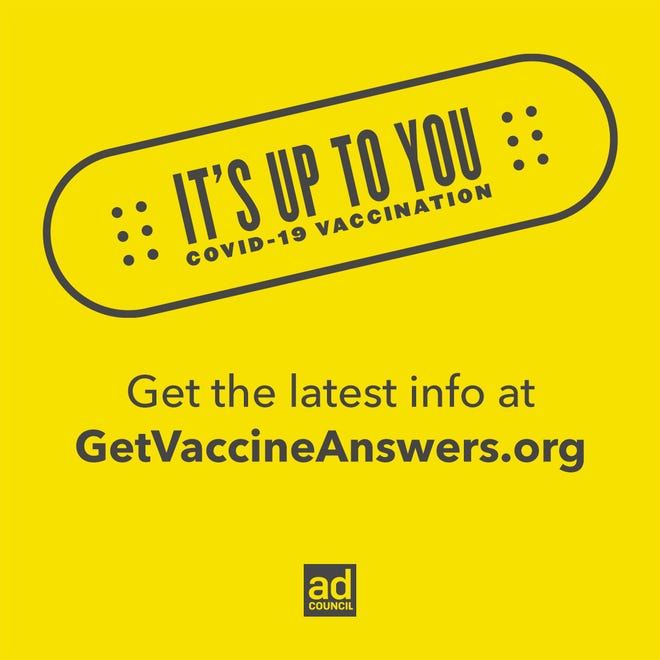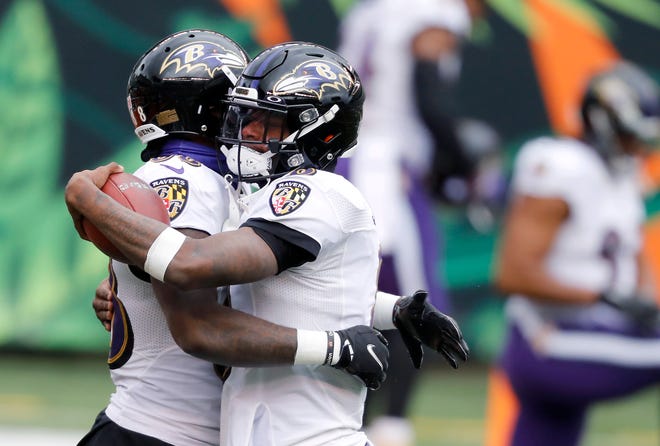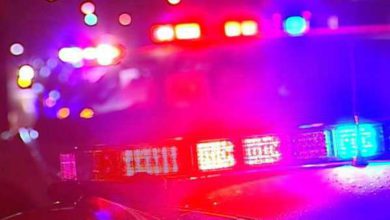
Prepare for an onslaught of ads reminding us of all the things we miss about life before the pandemic — hugs, going to church, family gatherings and hanging with friends — and information about how COVID-19 vaccines can bring them back.
The ad campaign from The Ad Council will include more than $500 million in donated media and talent. It launched Thursday and will slowly change as the landscape of who’s eligible for vaccine and what questions they have shifts.
“We’re dealing with the biggest issues of our lifetime,” said the Ad Council’s president and CEO Lisa Sherman. “We recognized pretty quickly that unless people could learn more about the vaccine and get educated, they may not take them. And then we wouldn’t be any better off next year than we are this year.”
The ads are aimed at the 40% of Americans who haven’t yet made up their minds about getting vaccinated, Sherman said. The Ad Council focused on in-depth focus groups and surveys to understand what questions people had and what their worries were.
The result is a website, getvaccineanswers.org that gives a simple message: Having questions is good, it’s normal to be cautious when something new comes along. Answers are available.

The ads, which will appear on TV, radio and online, tug on the heartstrings. They feature images of people holding hands, families at a child’s birthday, people walking into church together or friends sharing pizza side by side, a reminder of how much things have changed in a year.
The tagline to all is “It’s up to you.” Not to get vaccinated, but to get informed, said Sherman.
“The ads strike a positive and engaging tone, one that’s not mandating but inviting them into the process of getting the facts from a trusted source,” she said.
Why get a COVID-19 vaccination if you still have to wear a mask? It beats getting sick, health experts say
The Ad Council is a nonprofit that creates and distributes public service announcements. The Centers for Disease Control and Prevention and the Department of Health and Human Services provided scientific guidance.
Some of the ads will be seen broadly on television but they will be especially focused on communities with high levels of vaccine hesitancy, especially Hispanic and Black communities. That will include campaigns that are credible and culturally relevant. The overall message is the same but it might be presented slightly differently.
“For the Hispanic population there’s more of an emotive angle,” said Charysse Nunez,
insights lead for the Ad Council’s COVID-19 Vaccine Education Initiative.
“We knew there were many people who hadn’t had the opportunity that to visit their family and so that’s something they miss,” she said.

For the Black community, images of family reunions, going to church and graduations resonated.
But overall the ads can’t be too targeted, said Sherman. “It’s important to be careful and not segment and dissect to a point where it could be ineffective.”
The Ad Council is collaborating with multiple partners, including the Black Coalition Against COVID-19, Color of Change, NAACP, National Alliance for Hispanic Health, National Hispanic Medical Association, National Medical Association, National Urban League, UnidosUS, United States Hispanic Chamber of Commerce (USHCC) and others.
Fact check: Misleading meme suggests deaths following COVID-19 vaccination are due to vaccine
There’s also a National Faith Steering Committee to inform the efforts with over 20 influential faith leaders from the Hispanic and Black communities.
“I am pleased to partner with the Ad Council and fellow clergy in this effort and am optimistic about what God is doing through the medical community and what he will do through this campaign,” said Bishop T.D. Jakes of The Potter’s House, a large non-denominal church in Dallas, Texas.
There are also online elements. There will be a vaccine-supportive emoji on Twitter, custom content on Facebook, a campaign among TikTok creators and within the gaming community.
The ads appearing now are only the tip of the iceberg. More will come as more vaccine become available and a broader segment of America gets access.
These messages are going out now because although 13.4% of Americans have received at least one COVID-19 shot, the majority are still waiting their turn and are increasingly open to information.
There's no 'giant national campaign' for COVID-19 vaccine education. Why? Experts say there's a better way
The benefits will become apparent as more people see that vaccination contributes to fewer hospitalizations and as people are able to return to schools, universities and a more normal daily life, said Glen Nowak, director of the Center for Health and Risk Communication at the University of Georgia.
“That will help in terms of helping people understand the importance and benefits of getting vaccinated,” he said.
The campaign will continue for months. That’s important because while the number of people going into hospitals and dying is waning now, it could be simply another cycle of the pandemic, said Dr. Jesse Goodman, professor of medicine and infectious diseases at Georgetown University.
“A month ago, everybody was completely panicked. Now people are seeing these numbers come down. We've got to have a steady ship in terms of the public health messaging,” he said.
Source link










